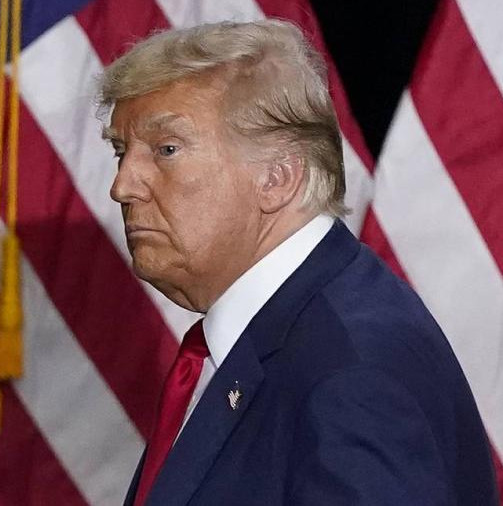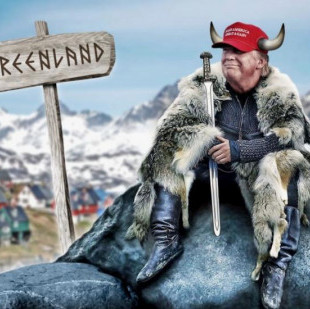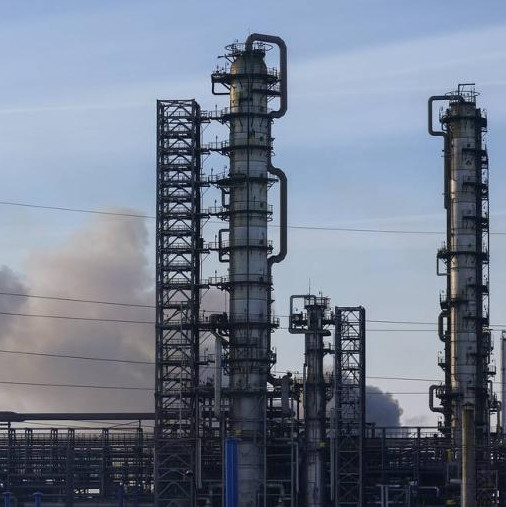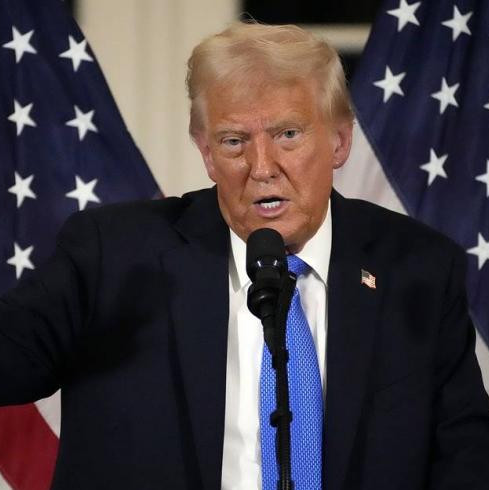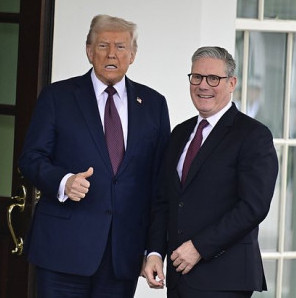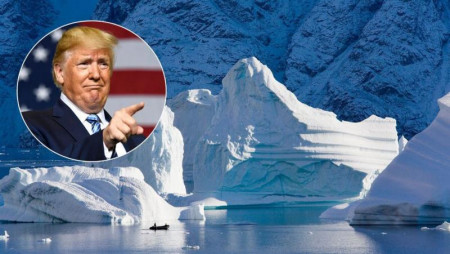
One cannot help thinking that Trump needs Canada and Greenland to make his country the world’s largest. He loves everything vivid and significant, but also money, so business reckoning is clearly visible in this matter.
On March 21, US President Donald Trump reiterated that Canada should become part of the United States. "When I say they should be a state, I mean that," he said. This latest statement proves the US administration's commitment. Speaking about the motives for annexing Canada, Trump wrote on his Truth Social network that if both states merged, "there would be no tariffs, taxes would go way down, and they would be TOTALLY SECURE." And, to show Canadians that they will be much more comfortable in the United States, 25-percent tariffs have been imposed on Canadian goods starting March 4 (except for energy resources, for which there is a 10 percent one).
In Canada, Trump's statements and actions have drawn sharp criticism from both political and public circles. "Trump will regret making Canada a state," Chris Wilson-Smith, a columnist for the influential local Globe and Mail newspaper, wrote, for example. However, it's not that simple as opinions of Canadian people vary. For one, those dwelling in Alberta and Quebec have repeatedly expressed desire to secede from Canada and become independent. 27 percent of respondents called the scenario likely over the next decade, and 22 percent said they were ready to support the provinces’ merge with the United States after gaining independence.
Notably, Canada outstrips the United States in terms of territory size (9.98 million square kilometers) and is one of the world’s richest countries in energy and resource reserves. Canada's key natural resources are oil, gas, timber, and water. Besides, it has significant reserves of metals such as gold, silver, copper, and nickel that play an important part in global industry.
By using these resources, it has emerged as the US second largest trading partner and main exporter. In particular, Canada has been its key supplier of oil (4.3 million barrels per day) and wood meant for construction, furniture and paper production. But in the end, it is still heavily dependent on the American market. Its GDP is 25 percent generated by revenues from trade with America. And if the United States finds replacement for its oil, what should Canadians do with it? Transporting it overseas is expensive, and apart from the United States, the list of places where heavy Canadian oil may be needed is quite short, and the same is true for other goods as well. In the long run, its economy will stagnate and the budget will suffer.
But the sanctions imposed will negatively affect US economy, too. The tariffs will raise costs for American manufacturers who import Canadian goods, raise prices for consumers who are already tired of inflation, and will not generate revenues Trump predicts. The American Tax Foundation has estimated that due to the trade war, the amount of taxes paid by the average American household will increase by $670 as early as this year, and the national GDP will decrease even without retaliatory measures from Canada. Trump has also acknowledged that American consumers may feel some discomfort, but says it is no big deal. "They owe us a lot of money, and I'm sure they're going to pay," he promised. Energy is among the most vulnerable sectors of American economy, with Canada accounting for over 60 percent of crude oil supplies, along with the food and automotive industries (the United States imports almost half of its components from Canada).
At the same time, unification does have significant advantages for the United States. First of all, it will make certain raw materials and electricity more available as they are vital for developing AI and data centers. Today, American IT giants are actively searching for new cheap electrical power sources. The most promising one is construction of new nuclear power plants. Microsoft even plans to resume operation of the one on Pennsylvania’s Three Mile Island which was mothballed after a major accident in 1979. But American mines now provide only 28 percent of uranium needed even for active NPPs, the rest has to be imported. And Canada is the only G7 country with the necessary uranium reserves. So, at first glance, Donald Trump's unexpected idea of making this country part of the United States may not be that much cranky for America.
As for Greenland, even during his first term, Trump suggested that the Danish authorities transfer it to the United States for a long-term lease, but met with a repulse. Now he has reiterated intent to annex the island. And while Canada may still be content with Trump's promise not to use military force against it, Denmark, which Trump also has territorial claims to, has received no assurances of the kind.
To the United States, Greenland is first and foremost militarily important, since the shortest ballistic missile flight paths lie across the Arctic, and America deems control over this territory as key to security. This is particularly important because, as Trump says, Denmark cannot make Greenland adequately safe, and therefore possession or control of it is a strategic necessity for the United States. US leadership is sure that in the arms race that has begun, they will need not just an ally who may suddenly abandon its obligations in face of danger, but a fully controlled territory. And once the United States acquires it, it will turn into a military outpost in the Arctic.
As for its economic importance, Greenland is not only the world's major island covering 2.16 square kilometers, of which 80 percent are covered with ice. The Financial Times estimates Greenland at $1.1 trillion owing to its rare earth minerals and resource potential. In particular, rare-earth reserves are estimated at 40 million tons, and uranium at 300,000 tons. The island has deposits of iron, uranium, aluminum, nickel, tungsten, titanium, copper, platinum, and rubies. There are also oil and natural gas there, but they are not being extracted for ecological reasons. The United States needs these resources to ensure its industry’s raw-stuff independence. Moreover, Greenland's magnitude has recently increased over the escalating tariff war with China. The latter has responded to each tariff imposed against it by reducing rare earth exports. In addition, the island's ice contains the world’s second fresh water reserve after Antarctica, amounting for 2.85 million cubic kilometers, which is a hundred times more than in Lake Baikal! And thanks to climate change, all the resources have become more accessible to develop.
The Chinese factor is also a major driver here. The US desire to acquire Greenland is because it is alarmed by China’s expanding presence in the Arctic, The New York Times’ columnist Goodman claims. Back in 2018, Beijing unveiled plans to build infrastructure and develop shipping lanes exposed by climate change. And, according to Trump, the United States should prevent China from gaining a foothold on North America's doorstep.
In general, we can deduce that the purpose of the American administration's intentions is to boost the United States’ military and economic dominance in the Western Hemisphere. If Canada and Greenland join in, the US-controlled Arctic zone is going to be equal to Russia’s. The united entity would account for about a quarter of the world's explored mineral deposits worth $78 trillion (another quarter of global resources is located in Russia and estimated at $76 trillion). In the future, this would create a raw material base to ensure technological leadership, acquire additional energy and resource capacities, and strengthen defense capabilities.
